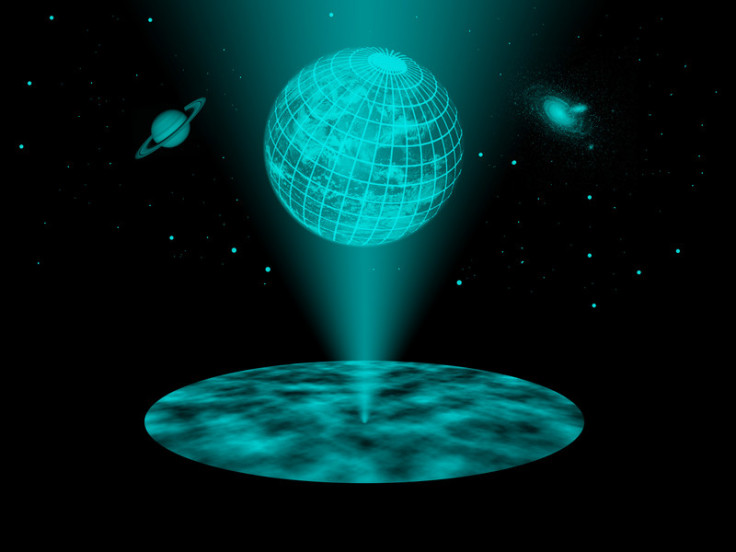Universe is a hologram? Tool to test holographic principle edges closer

The idea that we are living inside a hologram universe could soon be tested, with scientists saying they have found a way to test the validity of the holographic principle.
The hologram universe theory has been around for decades. It says the universe looks three dimensional to us but, just like a hologram is a 2D object that appears 3D, the same could be happening with the perception of our world.
The holographic principle says a mathematical description of the universe needs one fewer dimension than it appears to.
Until now, though, the principle has just been studied in exotic spaces with negative curvature – spaces far different from those found in our universe.
However, scientists from the TU Wien in Vienna now say the theory could work even in a flat spacetime.
Gravitational phenomenon are described in 3D. The behaviour of quantum particles is calculated in a theory with 2D. The results from both can be mapped on to one another. Surprisingly, this method has been found to be very successful and thousands of papers about Juan Maldacena's theory have been published.
Theory v reality
While the holographic principle is important to theoretical physics, it does not seem to have much to do with our own universe. The spaces imagined are negatively curved – any object thrown out would eventually return. In comparison, our universe is quite flat and has a positive curvature.
However, Daniel Grumiller, who published the findings in the journal Physical Review Letters, said this correspondence could be attributed to our own universe.
To test the theory, scientists spent three years constructing gravitational theories that do not require exotic spaces and, instead, live in a flat space. In the paper, they confirm the validity of the correspondence principle in a flat universe.
"If quantum gravity in a flat space allows for a holographic description by a standard quantum theory, then there must by physical quantities, which can be calculated in both theories – and the results must agree," Grumiller said.
Quantum entanglement
One key feature must appear in the gravitational theory – quantum entanglement – which says when quantum particles are tangled they cannot be described individually and form a single object. Grumiller and colleagues note there is a measure from the amount of enganglement in a quantum system – the entropy of enganglement.
The researchers were able to show this entropy of entanglement takes the same value in flat quantum gravity as it does in a low dimension quantum field theory.
"This calculation affirms our assumption that the holographic principle can also be realised in flat spaces. It is evidence for the validity of this correspondence in our universe," said researcher Max Riegler.
Grumiller added: "The fact that we can even talk about quantum information and entropy of entanglement in a theory of gravity is astounding in itself, and would hardly have been imaginable only a few years back. That we are now able to use this as a tool to test the validity of the holographic principle, and that this test works out, is quite remarkable."
© Copyright IBTimes 2025. All rights reserved.






















